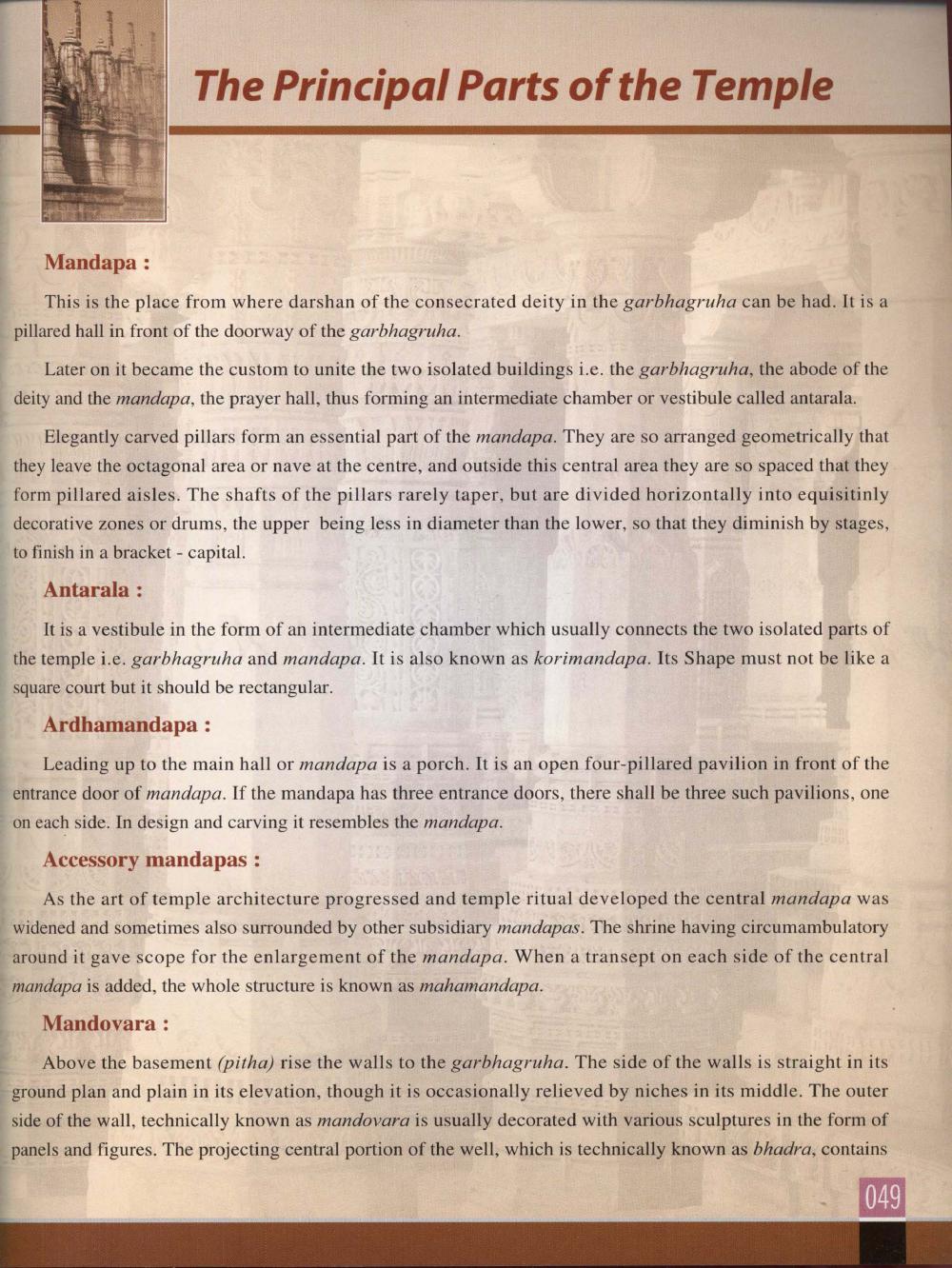________________
The Principal Parts of the Temple
Mandapa:
This is the place from where darshan of the consecrated deity in the garbhagruha can be had. It is a pillared hall in front of the doorway of the garbhagruha.
Later on it became the custom to unite the two isolated buildings i.e. the garbhagruha, the abode of the deity and the mandapa, the prayer hall, thus forming an intermediate chamber or vestibule called antarala.
Elegantly carved pillars form an essential part of the mandapa. They are so arranged geometrically that they leave the octagonal area or nave at the centre, and outside this central area they are so spaced that they form pillared aisles. The shafts of the pillars rarely taper, but are divided horizontally into equisitinly decorative zones or drums, the upper being less in diameter than the lower, so that they diminish by stages, to finish in a bracket - capital.
Antarala :
It is a vestibule in the form of an intermediate chamber which usually connects the two isolated parts of the temple i.e. garbhagruha and mandapa. It is also known as korimandapa. Its Shape must not be like a square court but it should be rectangular.
Ardhamandapa:
Leading up to the main hall or mandapa is a porch. It is an open four-pillared pavilion in front of the entrance door of mandapa. If the mandapa has three entrance doors, there shall be three such pavilions, one on each side. In design and carving it resembles the mandapa.
Accessory mandapas:
As the art of temple architecture progressed and temple ritual developed the central mandapa was widened and sometimes also surrounded by other subsidiary mandapas. The shrine having circumambulatory around it gave scope for the enlargement of the mandapa. When a transept on each side of the central mandapa is added, the whole structure is known as mahamandapa.
Mandovara:
Above the basement (pitha) rise the walls to the garbhagruha. The side of the walls is straight in its ground plan and plain in its elevation, though it is occasionally relieved by niches in its middle. The outer side of the wall, technically known as mandovara is usually decorated with various sculptures in the form of panels and figures. The projecting central portion of the well, which is technically known as bhadra, contains
049




